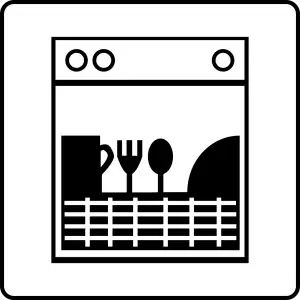Revive Your Rusty Cast Iron Skillet: Expert Tips on Cleaning and Restoring

- Gather the necessary supplies for cleaning
- Preparing the skillet for cleaning
- Method 1: Using salt and oil to remove rust
- Method 2: Using vinegar and baking soda to remove rust
- Method 3: Using a potato and dish soap to remove rust
- Scrubbing and rinsing the skillet
- Drying and seasoning the skillet
- Tips for preventing rust in the future
A cast iron skillet is a timeless kitchen tool that can last for generations if properly cared for. Not only does it provide excellent heat distribution and retention, but it also adds a unique flavor to your dishes. However, without regular cleaning and maintenance, your beloved skillet can become rusty and lose its charm. In this article, we will explore expert tips on how to clean and restore your rusty cast iron skillet, ensuring its longevity and preserving its culinary magic. So let's dive in and revive your trusty kitchen companion!
Gather the necessary supplies for cleaning
Before you begin the process of cleaning and restoring your rusty cast iron skillet, it's important to gather all the necessary supplies. Here's a list of items you'll need:
1. Coarse salt: This will act as an abrasive to help remove rust.
2. Oil (vegetable or canola): You'll use this in combination with the salt to create a paste for rust removal.
3. Vinegar: This acidic solution will help dissolve stubborn rust spots.
4. Baking soda: It will be used in conjunction with vinegar for a more powerful rust removal method.
5. Dish soap: This will be used in one of the methods to clean the skillet thoroughly.
6. Potato: Surprisingly, a potato can also aid in removing rust due to its natural acidity.
By having these supplies ready, you'll be well-prepared to tackle the task of reviving your rusty cast iron skillet and bringing it back to its former glory.
Preparing the skillet for cleaning
Before you begin the process of cleaning your rusty cast iron skillet, it's important to properly prepare it. Start by removing any loose rust or debris from the surface of the skillet using a stiff brush or steel wool. Be sure to scrub all areas, including the handle and sides. Next, rinse the skillet with warm water to remove any remaining dirt or particles. Finally, dry the skillet thoroughly with a clean towel or paper towel. By preparing your skillet in this way, you'll ensure that the cleaning methods you choose are more effective in removing rust and restoring its original shine.
Method 1: Using salt and oil to remove rust
One effective method for removing rust from a cast iron skillet is by using salt and oil. Start by sprinkling a generous amount of coarse salt onto the surface of the skillet. Then, take a paper towel or a clean cloth and pour a small amount of vegetable oil onto it. Use the oiled cloth to scrub the salt into the rusted areas, applying gentle pressure. The combination of salt's abrasive texture and oil's lubricating properties will help lift off the rust. Continue scrubbing until all the rust has been removed, adding more salt and oil as needed. Once satisfied with the results, rinse the skillet thoroughly with warm water to remove any remaining residue.
Method 2: Using vinegar and baking soda to remove rust
Another effective method for removing rust from your cast iron skillet is by using a combination of vinegar and baking soda. Start by filling a sink or basin with equal parts water and white vinegar. Place the rusty skillet in the solution and let it soak for at least one hour.
After soaking, sprinkle a generous amount of baking soda onto the surface of the skillet. Use a scrub brush or sponge to gently scrub the rusted areas, applying pressure as needed. The combination of vinegar and baking soda will create a chemical reaction that helps lift off the rust.
Once you have scrubbed away the rust, rinse the skillet thoroughly with warm water to remove any residue. Make sure to dry it completely using a clean towel or by placing it on low heat on your stovetop.
Remember, if there are still some stubborn spots of rust remaining, you can repeat this process until they are completely gone.
Method 3: Using a potato and dish soap to remove rust
Another effective method for removing rust from your cast iron skillet is using a potato and dish soap. Start by cutting a raw potato in half. Dip the cut side of the potato into some dish soap, making sure it's well coated.
Next, rub the soapy potato all over the rusty areas of the skillet. The natural acidity of the potato combined with the cleaning power of the dish soap will help break down and lift off the rust.
Continue scrubbing until you see the rust starting to come off. You may need to apply more dish soap or use a brush to help loosen stubborn rust spots.
Once you're satisfied with the results, rinse off the skillet thoroughly with warm water. Make sure to remove all traces of soap and rust particles.
Remember that this method may require some additional scrubbing compared to other methods, but it can be quite effective in restoring your cast iron skillet to its former glory.
Now that you've successfully removed the rust from your skillet using this method, it's time to move on to the next step: scrubbing and rinsing the skillet.
Scrubbing and rinsing the skillet
Once you have applied your chosen rust removal method, it's time to scrub and rinse the skillet. Use a stiff brush or sponge to scrub away any remaining rust or residue. Be sure to pay extra attention to the areas where rust was present. Rinse the skillet thoroughly with warm water to remove any loosened particles. Make sure all traces of cleaning agents are removed as well. The goal is to have a clean and rust-free surface before moving on to the next step.
Drying and seasoning the skillet
Drying and seasoning the skillet is a crucial step in the restoration process. After rinsing off any remaining residue, thoroughly dry the skillet with a clean towel or by placing it over low heat on the stove. Make sure all moisture is completely evaporated to prevent rust from forming again.
Once dry, it's time to season the skillet. This involves applying a thin layer of oil to the entire surface of the skillet, inside and out. Use a high smoke point oil like vegetable or flaxseed oil, and make sure to coat every nook and cranny.
Next, place the skillet upside down in an oven preheated to 350°F (175°C). Let it bake for about an hour to allow the oil to polymerize and create a non-stick surface. This process will also help protect your skillet from future rust.
After an hour, turn off the oven and let the skillet cool completely before removing it. Your cast iron skillet is now ready for use!
Remember, proper seasoning is key to maintaining your skillet's durability and enhancing its flavor-enhancing properties. Regularly re-seasoning your skillet after each use will help build up its protective layer and keep it in top condition for years to come.
Tips for preventing rust in the future
1. Dry your skillet thoroughly after each use to prevent moisture from causing rust.
2. Avoid soaking your skillet in water for extended periods of time.
3. Apply a thin layer of oil to the surface of the skillet after cleaning and before storing it.
4. Store your skillet in a dry place with good air circulation.
5. Use your cast iron skillet regularly to keep it seasoned and prevent rust from forming.
6. Avoid using harsh cleaning agents or abrasive scrubbers that can damage the seasoning on your skillet.
7. If you notice any signs of rust, address it immediately using one of the methods mentioned earlier.
8. Consider investing in a cast iron conditioner or seasoning spray to help maintain the skillet's protective layer.
By following these tips, you can enjoy your restored cast iron skillet for years to come without worrying about rust.
Now that you have successfully cleaned and restored your rusty cast iron skillet, it's time to reap the rewards of your hard work. With proper care and maintenance, your skillet will continue to be a reliable kitchen companion for years to come.
Remember to always dry your skillet thoroughly after each use to prevent any moisture from causing rust. Additionally, make sure to season your skillet regularly with a thin layer of oil to maintain its non-stick surface and protect it from oxidation.
By following these expert tips on cleaning and restoring, you can revive your rusty cast iron skillet and bring it back to its former glory. So go ahead, cook up some delicious meals and savor the flavors that only a well-seasoned cast iron skillet can provide. Happy cooking!
Published: 12. 02. 2024
Category: Home



